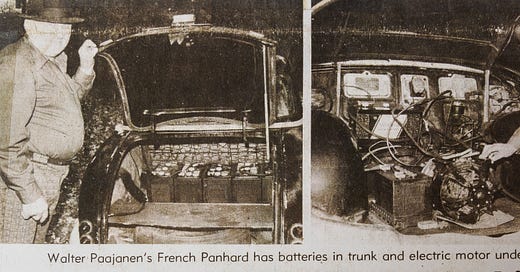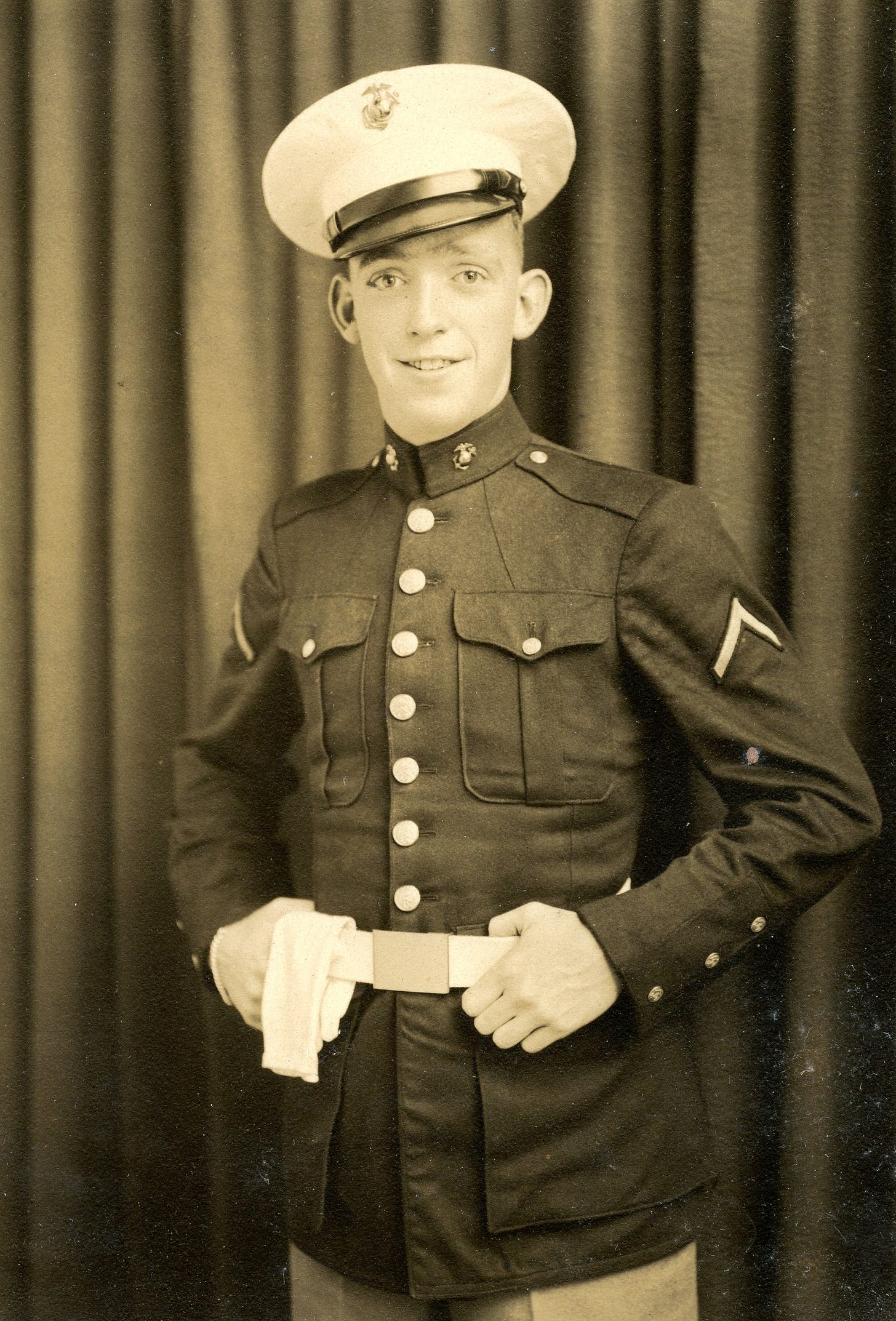October 31, 1974
One often-proposed solution to the oil shortage is the electric car, and Public Service Co. last week was showing here the experimental van they have bought.
Way ahead of Public Service, in time and technology, is Walter Paajanen of New Ipswich. He is driving one electric car of his own building, and is working on a second.
The first, completed last July, is based on a 1960 Panhard. It runs 12 to 15 miles on one charging, and is registered on agricultural license plates.
The second, still being built, is a NSU Sport Prinz.
The Panhard, built by one of the world's oldest auto firms, is a French six-passenger sedan, which originally had a two- cylinder gasoline engine driving the front wheels.
The electric motor now does the same job, with the batteries taking up part of the trunk. But the car is too heavy, Mr. Paajanen says, and that's why he is trying again. He made the Panhard for an experiment, when the engine wore out while the body was still good.
The NSU is a very light two- seater fastback coupe, made by a small German company that has now been taken over by Volkswagen. It too had a two-cylinder engine, in the rear, and a four speed "transaxle", or transmission and differential in one unit.
Mr. Paajanen, who does his own machining, is making a new shaft so that the electric motor can drive the transaxle.
To drive the electric, one uses different gears for different uses, just as with a gasoline car. A lower gear is needed for steep hills.
Downhill Charge There's something that can be done with electrics that can't be done with ordinary cars, though. With one kind of system, it is possible to recharge the batteries while going downhill.
The Panhard's batteries, originally used for starting Diesel trucks, can be recharged in. two hours. There are five 225 ampere, six-volt batteries, which cost $85 apiece.
Mr. Paajanen got the idea after meeting Charles Waterman of Athol, Mass., who has built and sold a number of conversions, mostly based on the Datsun. One of his most successful electrics has been based on the little Dutch DAF.
Tiny, lightweight cars have been the most successful chassis for conversion. Many such cars were imported between 1955 and 1965 and are now available nearly free, as orphan makes.
The 71-year-old Mr. Paajanen is well equipped to do his own work. He started tinkering with radios in 1923, and is mostly retired after being a television repairman since 1950. He has modified some TV test equipment to give the proper dash- board instruments for his cars.
His automotive knowledge came mostly, he said, from an ancient five-volume set of books on automotive engineering, published early in the century.
Electric cars were made until around 1940, and no great strides in engineering them have been made since. The problem is the lead-acid battery, which is heavy and inefficient but the best available.
The electric is pollution-free to drive, but derives its power from the central generating station, which may or may not be a polluter.
Old-time electric cars were often driven by ladies, because they were easy to operate. Some now in museums are so tall that they look like telephone booths on wheels, with huge plate glass windows and luxurious interiors, complete with cut glass vases.
The Public Service vehicle, however, is a truck, not a passenger car. In Europe, elec- tric-powered vehicles are used for short-route delivery, as of milk and mail.
In this country now, some electric vehicles travel thousands of miles every year, but since they never go outdoors, no one thinks of them as vehicles.
Forklift trucks, used in warehouses and factories, have to be electric because gas engines are unsafe to run indoors. The trucks are plugged in overnight to recharge.
If you see a little car or a milk truck coming down the road which is making no noise but the whine of the tires, perhaps it's an electric.
James Roger diary entries
22nd October 1912 (Tuesday)
Cloudy morning clearing up fine day wind southeast. David cutting tree roots in the Knowlton lot and teaming hard pan etc. after to grade the lot. I cut the beets in the field in the forenoon and wheeled them in in the afternoon, also pulled weeds in field. Got P.C. from May, Barbara doing well. Wrote to Jessie, Alice, Hamish and May.
Thank you Carl Toko (for identification)
This is Orville Anttila, the son of Florence Anttila and the Grandson of Edward and Ida Wheeler, former long term residents of the house that Ollie Niemi now resides. Orville graduated from Appleton Academy in 1947.





Being. Not bring! I hate this spellcheck.
Super article on Walter Paajanen.